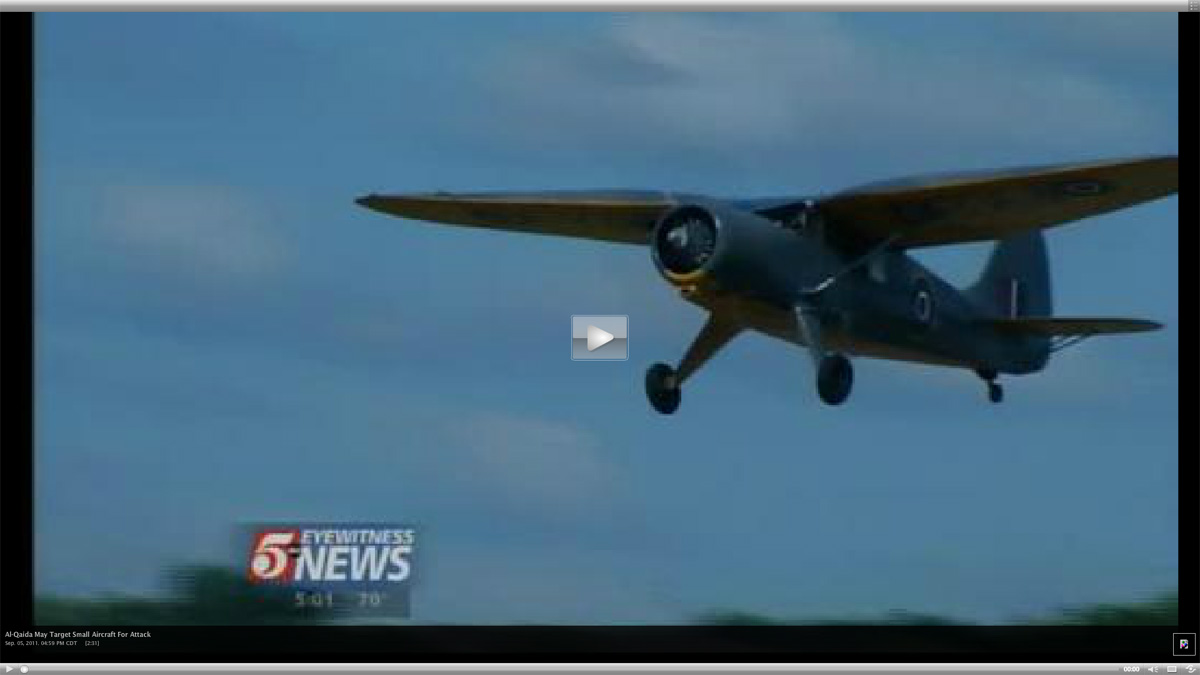Survivor of East Hartford plane crash told authorities it was intentional https://t.co/xE3TPeX6iQ
— TIME (@TIME) October 12, 2016
There probably isn’t a pilot of small planes in America who isn’t holding his/her breath this afternoon waiting for the inevitable calls to ban aircraft in the wake of the National Transportation Safety Board’s revelation this afternoon that a plane that crashed in East Hartford, CT., yesterday was intentionally brought down.
The Hartford Courant describes a weird series of events that only adds to the mystery.
The source, speaking on the condition of anonymity, said the student pilot told the instructor he did not want to fly the plane any longer, although it is not clear why. Another source said the student pilot starting flying the plane erratically and the instructor fought to gain control before the crash.
An initial search of an apartment where the student pilot, Feras M. Freitekh, was staying turned up no evidence of terrorism, the source said. But the FBI continued to search the apartment until about 2 p.m. Wednesday. Freitekh, 28, was killed.
The National Transportation Safety Board said its initial investigation indicates the crash was intentional and that the FBI will lead the investigation.
The authorities acknowledged that everyone automatically assumes terrorism and that seems to be the case , too. The local newspaper and other media, for example, noted there’s a Pratt and Whitney plant nearby.
Gov. Dannel P. Malloy warned Wednesday that the general public should not jump to conclusions about the reasons for the plane crash.
“As a nation, we have all had to adjust to a new reality,” Malloy told reporters at the state Capitol. “When events such as this occur, we recognize that people almost automatically wonder if someone meant to do us harm. But we must exercise caution about jumping to conclusions before discovering and considering all of the facts.”
Malloy has been briefed by the state police, who are involved in the investigation along with other authorities. He declined to discuss specific details of the investigation and referred questions to the FBI.
When asked if there is a no-fly zone over the Pratt & Whitney complex in East Hartford, Malloy said, “That’s a rather large site, so I hadn’t considered that – next to an international airport, as well as a local airport that has limited-size airplanes available to it.”
Regarding whether there is a need for increasing security across the state, Malloy said he was “not aware of any specific threats associated with this action.”
We all know what’s coming. The same thing that was asserted when a KSTP reporter walked into my hangar a few years ago, intent on creating a threat where none existed.
“Al Qaeda could use small planes,” KSTP alleged.
But, of course, al Qaeda didn’t use small planes. Neither did any other terrorist organization, and there’s a pretty good reason for that. Small planes are lousy for terrorism, and pretty good for killing the occasional ne’er-do-well who mistakenly thinks they are.
Let’s look at the pictures of that Connecticut plane crash again.
.@CTNewsAlert on #Periscope: plane crash east hartford no media https://t.co/qkMaIE9zW0
— New Haven Fire (@NewHavenFire) October 11, 2016
Telephone pole. Unharmed. Significant because the plane hit power lines and then the pole. Minivan: Hardly damaged. Parking signs: Pristine. Pavement: Still solid. Fire: small.
There simply isn’t any mass to small planes which presents significant harm. Underneath the skin of a wing, which is about as thick as a Coke can’s aluminum, there’s not much of anything: Air mostly. When it meets another object, a Pratt & Whitney plant, for instance, guess what gives?
That’s what kills people in small plane crashes. There nothing much to absorb energy other than the people inside.

